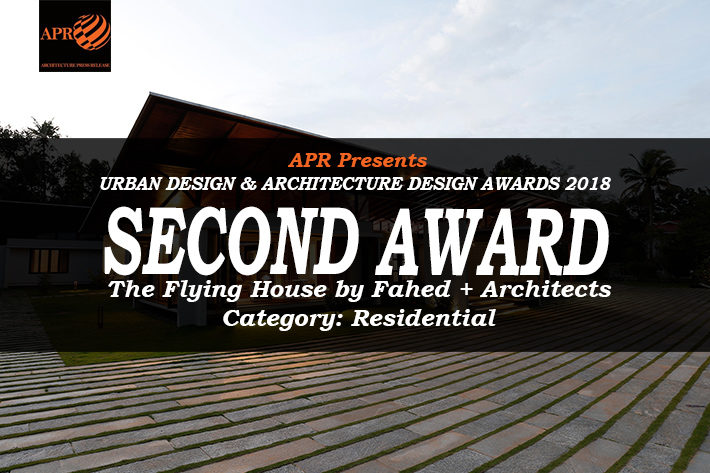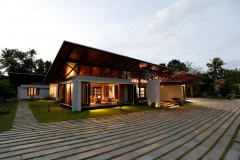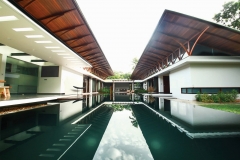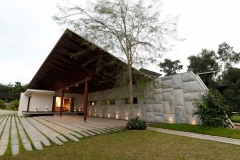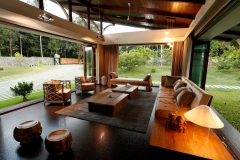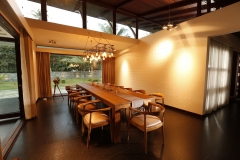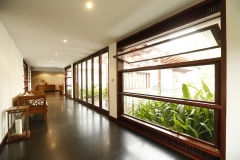A uniquely attractive 7400 square feet residential building, that stands out boldly in an exquisitely landscaped flat terrain, with a sloping roof that gives the feeling of a flying form about to soar up to the skies. The design concept tries to give form to the “new liberating architecture style” ie. the evolution of traditional Kerala buildings to the current age. The uniquely inverted roof structure in this design gives it a “neo-contemporary” approach with a fresh perception of the traditional roof. This residence is a single storey four bed room unit located on a 1.35 acre property designed around the landscape.
Urban Design & Architecture Design Awards 2018
Second Award | Category: Residential
Architects: Fahed Majeed
Studio: Fahed + Architects
Team Members: Ar. Fahed Majeed, Ar. Soumya Reghupal, Rajesh.MR
Country: India
Website: www.fahedarchitects.com
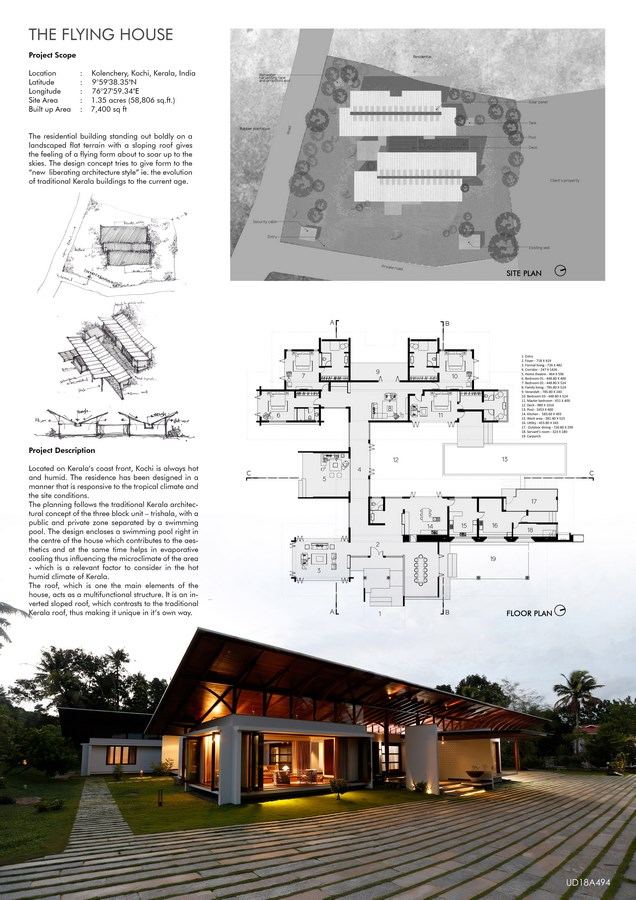
The firm believes in strong visual connectivity to the infinity and a very close-to-earth design approach. This residence is an excellent example of sustainable architecture where the stress has been on the use of vernacular materials like viz.wood and stone and local artisans’ skills..
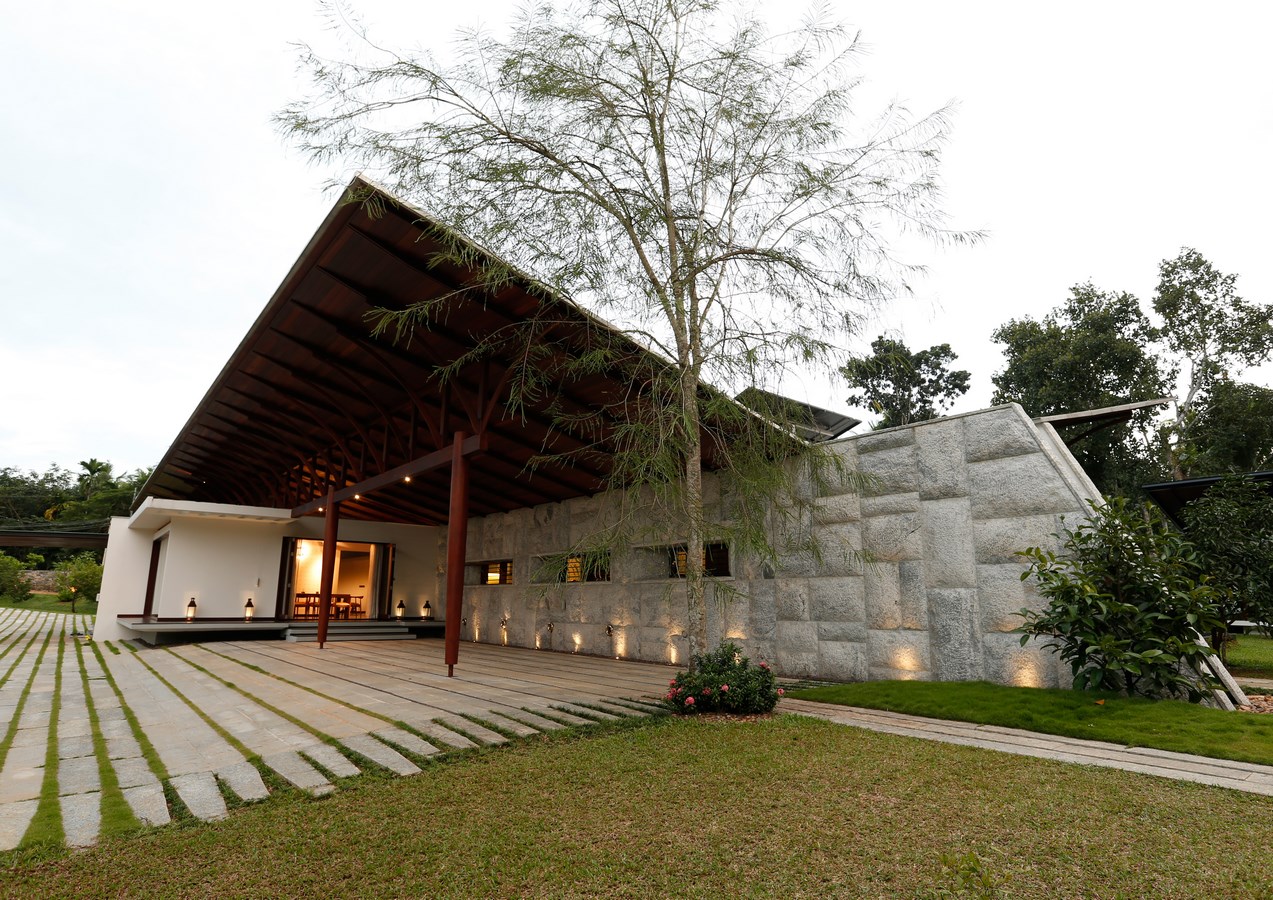
In its opened up form, the house blends into a perfect continuum with the pristine surroundings. Most of the walls are made up of openable/foldable/pivoted/fixed glass walls letting natural airflow and natural light flood every corner of the house. This has helped in reducing the need for artificial lighting loads drastically.
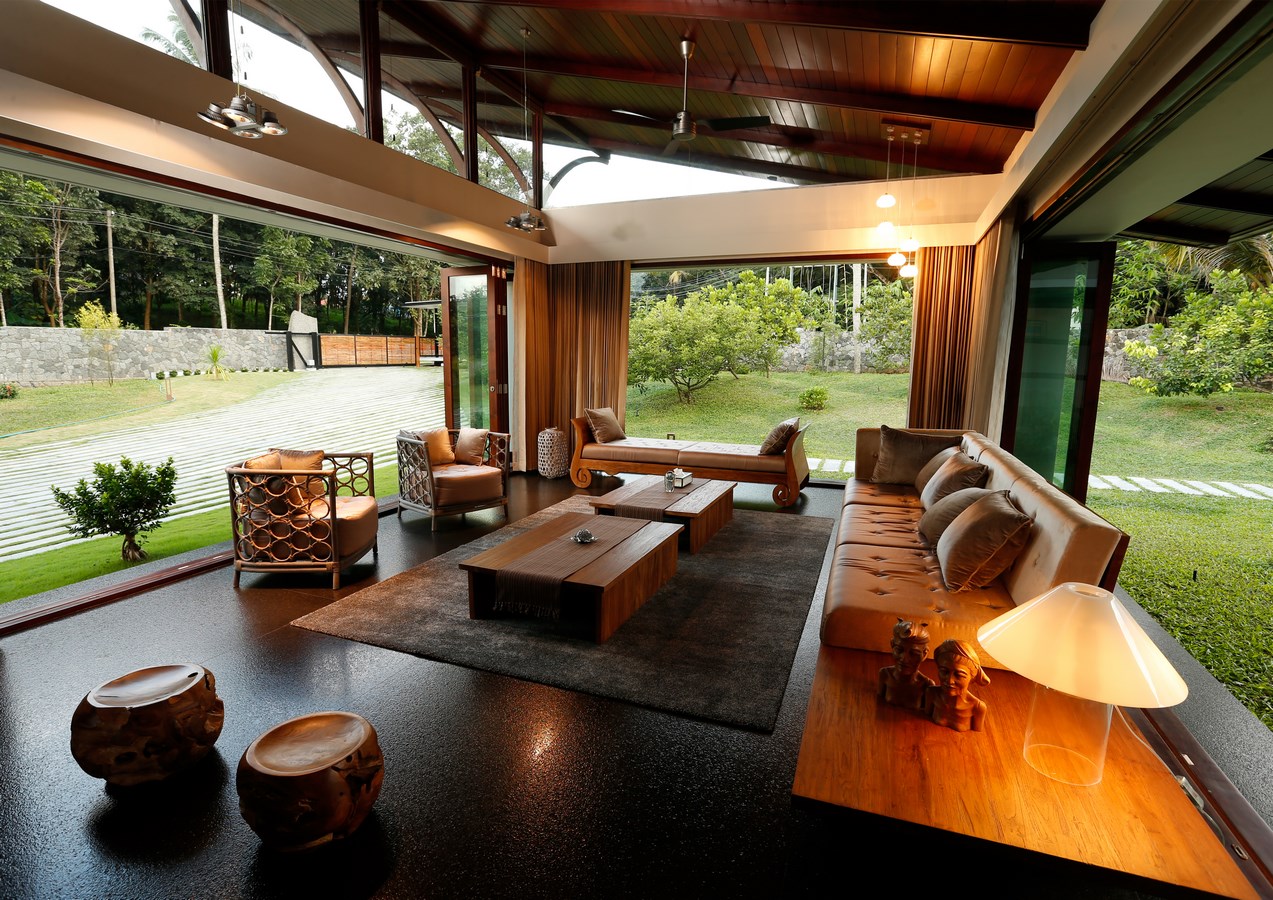
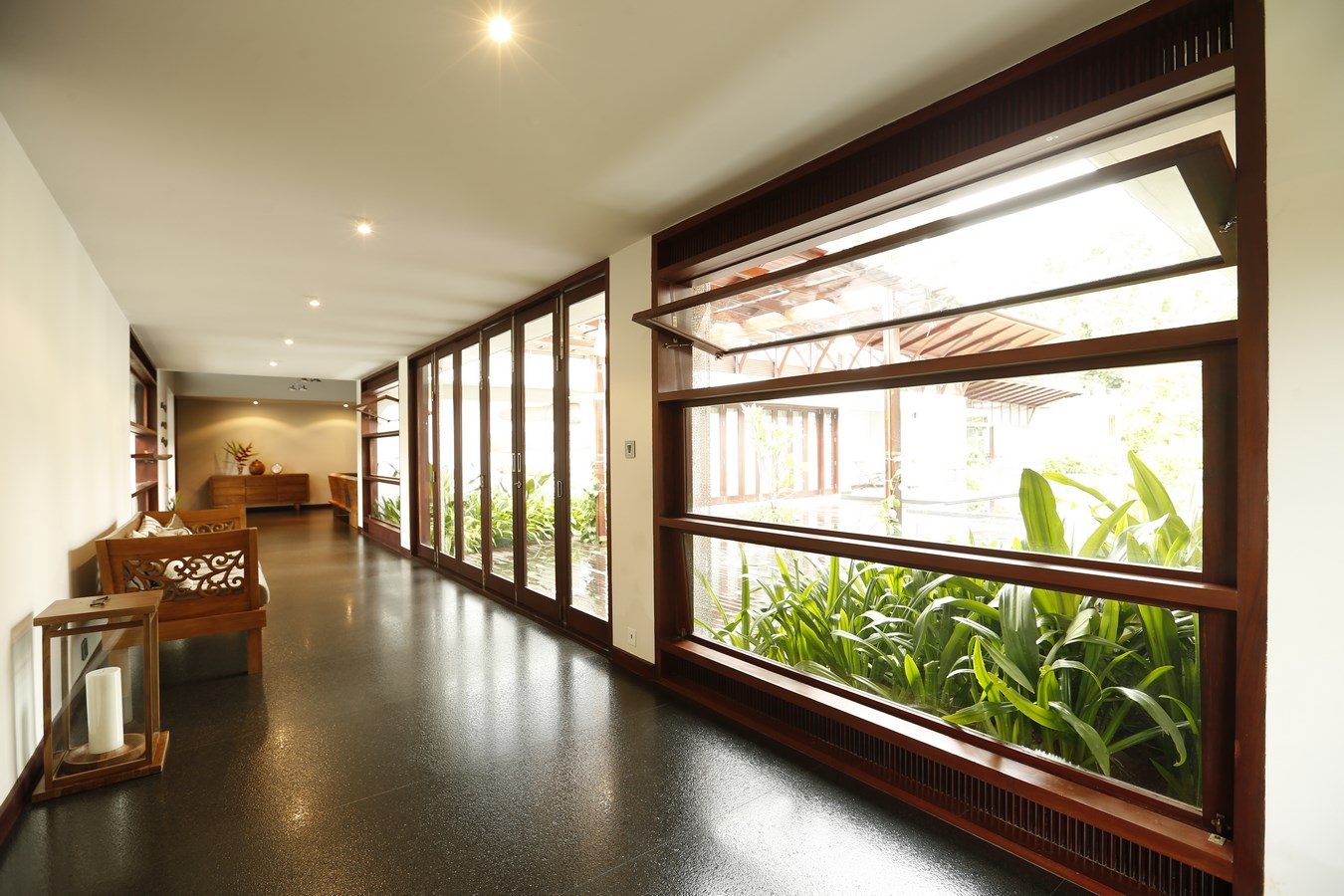
This unit is self-sufficient in terms of power with its entire electricity requirements met through solar power. The use of LED fixtures have contributed in reducing the overall power consumption thereby aiding self sufficiency with the solar power generated.
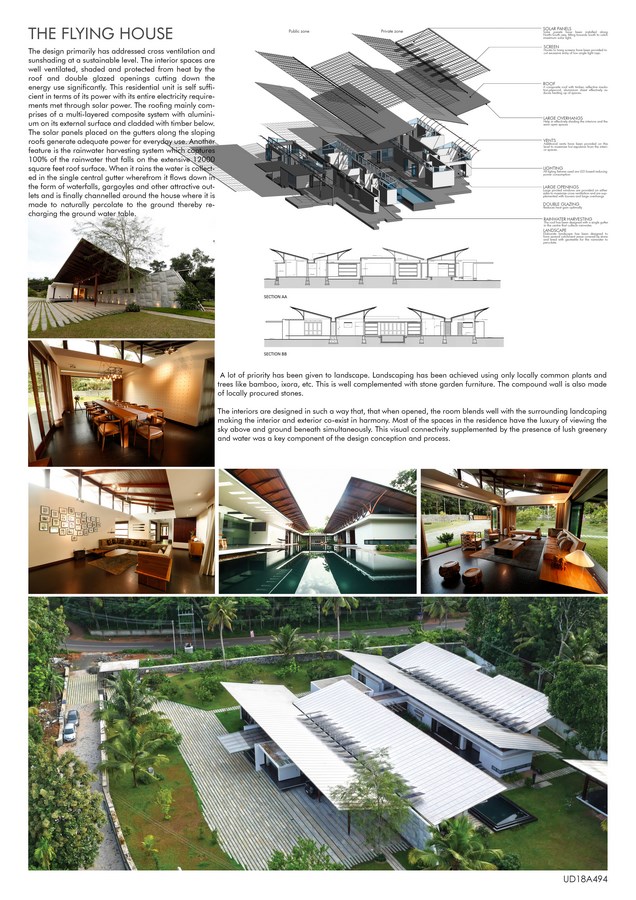
Another most noteworthy feature is the design of the rainwater harvesting system which captures 100% of the rainwater that falls on the extensive 12000 square feet roof surface. Rainwater is collected in the single central gutter wherefrom it flows down in the form of waterfalls, gargoyles and other attractive outlets and is finally channelled around the house where it is made to naturally percolate to the ground thereby recharging the ground water table. There is an extensive network of subterranean channels around the site which is allowed to percolate to the ground. This intelligent arrangement goes a long way in replenishing the ground water in this area.
The roofing system is a multi-layered composite one which has external aluminium and
internal timber. Wooden planks and MS rafters enveloped by wood beneath the roof yields an inherent dynamism to the ceiling. Large overhangs that hang down from the roof cut the direct light and helps reduce the solar gain through the clear.
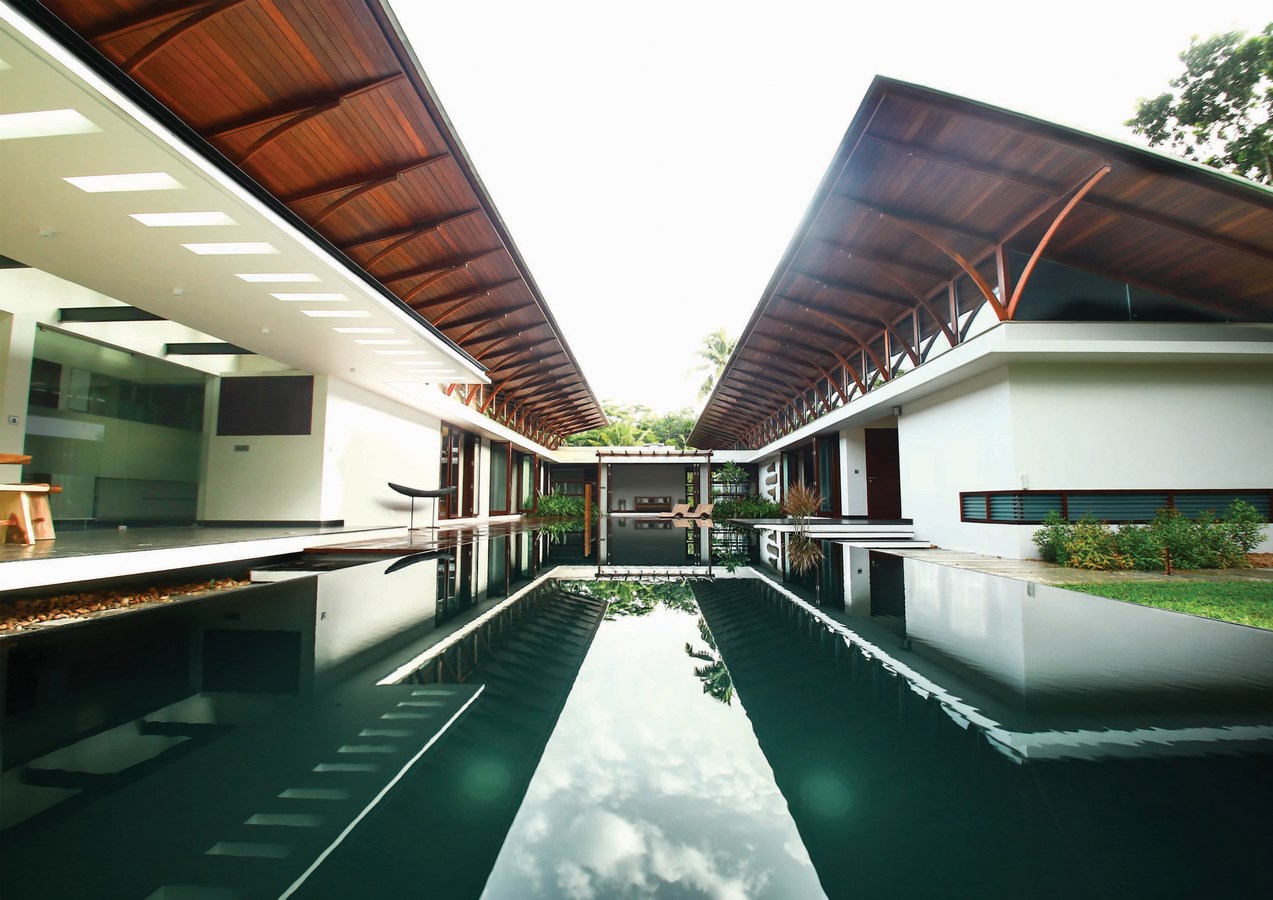
The planning follows the traditional Kerala architectural concept of the three block unit –
trishala, with a public and private zone separated by a swimming pool. The pool helps in evaporative cooling thus influencing the microclimate of the area — a truly desirable attraction in the hot humid climate of Kerala.
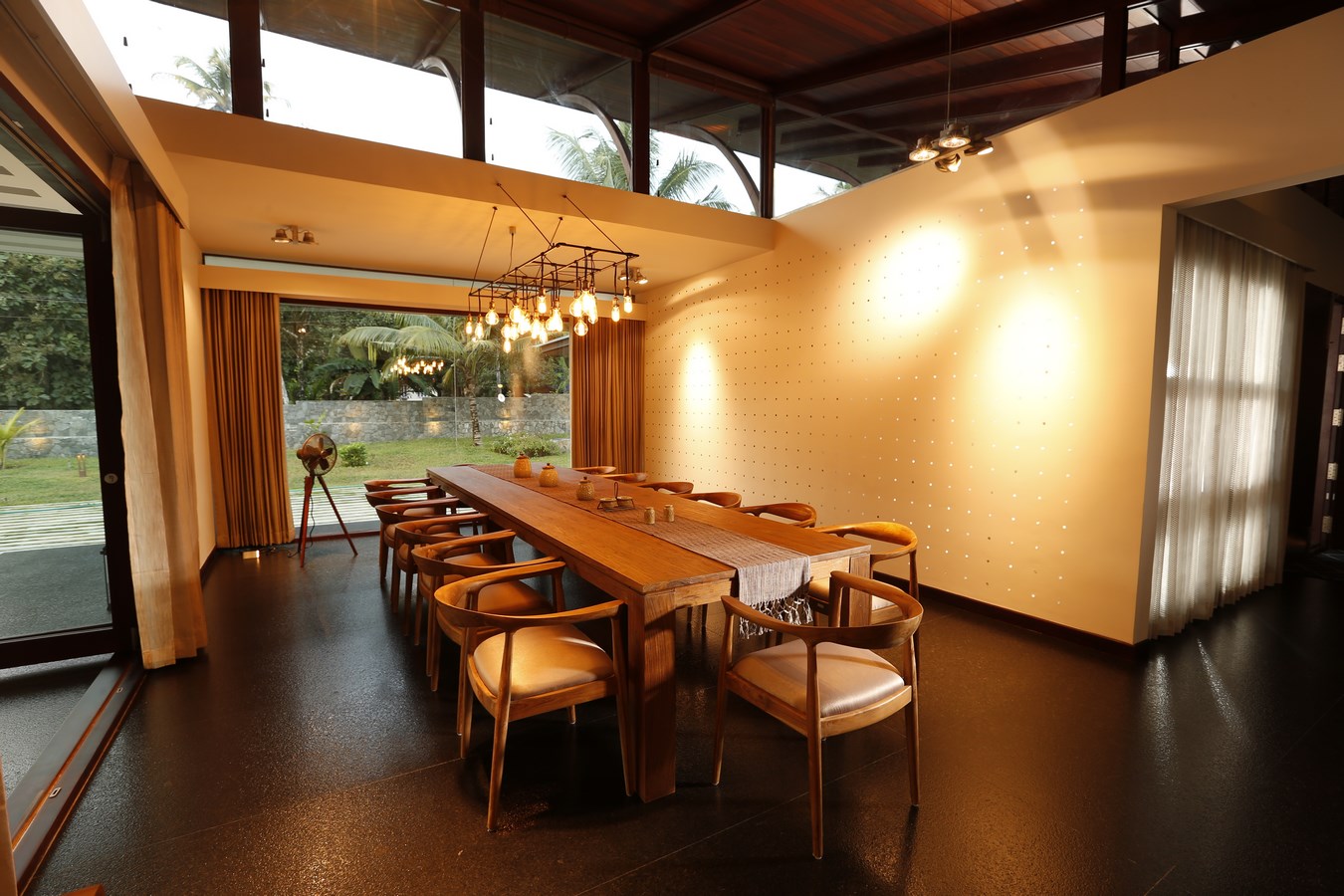
In the wall between the main entrance and the dining area, acrylic rods have been inserted across the thickness of the wall. When there is a light source on one side of the wall the other side displays a dramatic effect of optical light play.


